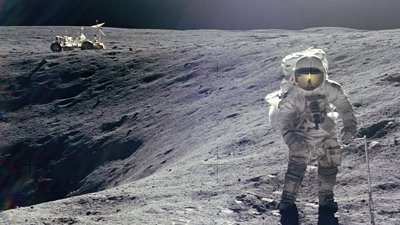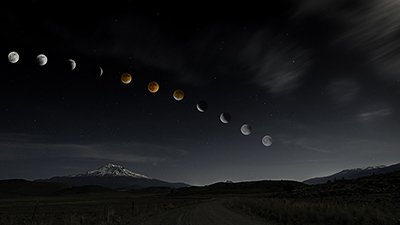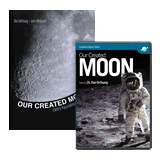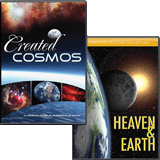A New Theory for the Moon’s Origin
Theories of the Past
In my lifetime there has been tremendous evolution in man’s ideas about the moon’s origin. In the 1960s, planetary scientists were convinced that the moon formed one of three ways:
- The earth and moon formed together from a common cloud of material
- The moon spun off from a rapidly rotating earth
- The moon formed elsewhere, and the earth’s gravity captured the moon as it passed by the earth.
But by the 1970s, it was clear, both from physical problems with each theory and from lunar composition measured from samples Apollo astronauts brought to earth, that none of the three theories were correct. Hence, by the late 1970s, planetary scientists developed a hybrid model of the moon’s origin, a scenario that hopefully kept the advantages of each of the three basic theories, while avoiding the shortcomings of each. This new model suggested that very early in its history, the earth suffered a glancing collision with a Mars-sized object. Much of the impacting body sank into the earth while the rest of it, as well as some of the earth’s original material, launched into orbit around the earth, from which the moon soon formed.
While this remained the standard theory for more than three decades, apparently there still were problems with the moon’s composition that this model did not explain well. For instance, the moon is void in water and heavier elements, such as iron, that are common on earth, but the lighter metals, such as silicon, aluminum, and potassium, matched earth’s composition well.
A New Theory
To solve this problem, a team of researchers considered a series of impacts. The team ran a thousand different computer simulations, and they found that the best scenario involved a few dozen collisions with the earth in the first 100–200 million years after the earth formed. Each incoming body had different composition. As each body collided with earth, part of the impacting body and part of the earth were ejected to form a ring around the earth. Each ring coalesced into moonlets, and then a complex tidal interaction with the earth raised the moonlets’ orbits. Each collision produced a new ring that coalesced into new moonlets. These moonlets eventually coalesced to form the moon.
The Moon’s Orbit Is Unique
This new theory glosses over the moon’s unique status.
This new theory glosses over the moon’s unique status. Most of the planets in the solar system have natural satellites (Mercury and Venus do not). Most of the larger satellites in the solar system orbit in the equatorial planes of their respective planets, but the moon doesn’t. Instead, the moon orbits in roughly the same plane that earth orbits the sun (the ecliptic). No other satellite, out of more than 150 in the solar system, does this. The moon’s unique orbit suggests that the moon had a unique origin.
Scripture also suggests that the moon has a unique origin. The moon is the lesser light that God made on Day Four (Genesis 1:14–19). The moon was intended to provide light on the earth, as well as to be used in time reckoning. But we have found that the moon does much more. The moon’s unique orbit causes it to stabilize the earth’s axial tilt. Without the moon’s stabilizing effect, long-term prospects on earth would be grim. This is consistent with Isaiah 45:18, which tells us that God created the earth to be inhabited. Therefore, the moon didn’t form from a random series of events. Rather God took care in how He made everything, including the moon.
Conclusion
One might object that the four gas giant planets were so massive that collisions with them played no significant role in the formation of their satellites. Or that their huge masses constrained their satellites to have orbits out of the ecliptic. But what of the other three terrestrial (earth-like) planets, Mercury, Venus, and Mars? As previously mentioned, Mercury and Venus have no natural satellites. Mars has two tiny satellites, but they likely are captured asteroids. Evolutionary scientists invoke a completely different scenario for the origin of the many other natural satellites in the solar system. Supposedly, only the earth’s moon formed by glancing collisions with the planet it orbits. Why did the earth alone undergo this unique process (at least 20 times)? Doesn’t that appear to be a long chain of improbable events? Isn’t it more reasonable to believe that the moon and its origin is unique because the moon was made to fulfill many specific purposes?
Recommended Resources

Answers in Genesis is an apologetics ministry, dedicated to helping Christians defend their faith and proclaim the good news of Jesus Christ.
- Customer Service 800.778.3390
- Available Monday–Friday | 9 AM–5 PM ET
- © 2025 Answers in Genesis






